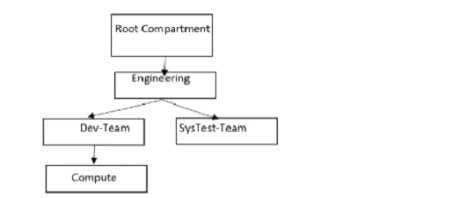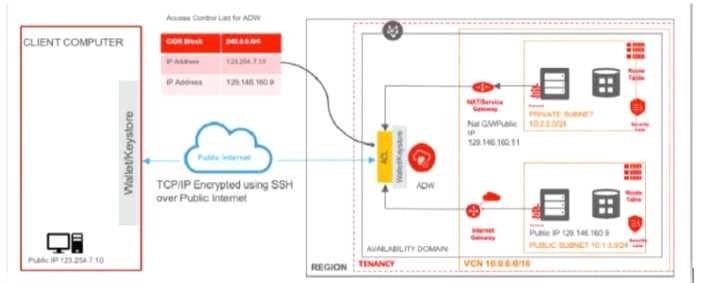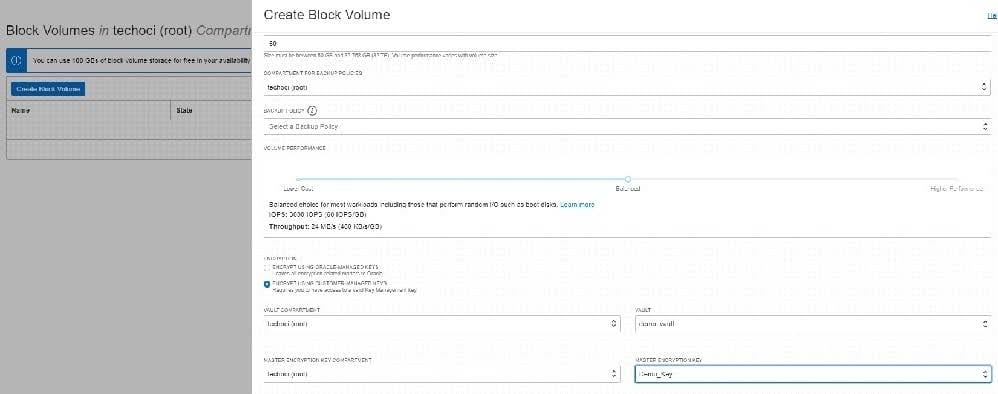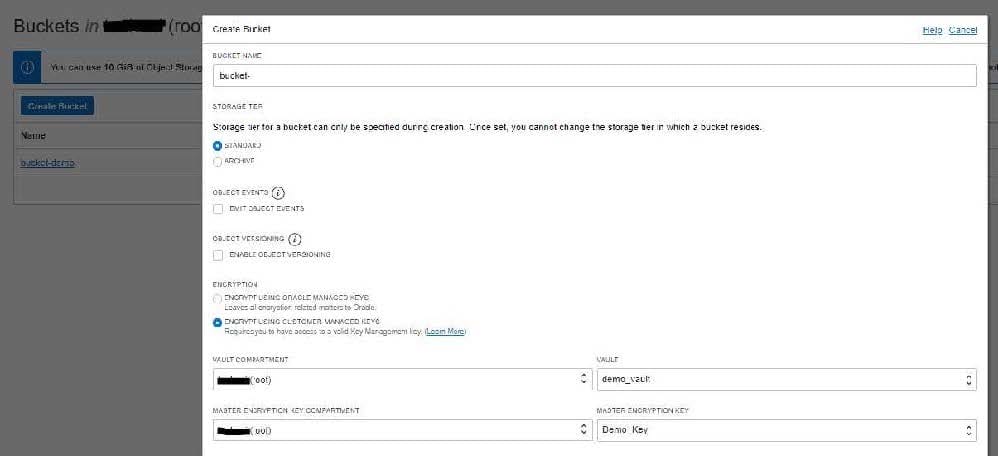Exam Details
Exam Code
:1Z0-997Exam Name
:Oracle Cloud Infrastructure 2019 Architect ProfessionalCertification
:Oracle CertificationsVendor
:OracleTotal Questions
:76 Q&AsLast Updated
:Mar 26, 2025
Oracle Oracle Certifications 1Z0-997 Questions & Answers
-
Question 31:
Give this compartment structure:

You want to move a compute instance that is in 'Compute' compartment to 'SysTes-Team'. You login to your Oracle Cloud Infrastructure (OCI)account and use the 'Move Resource' option. What will happen when you attempt moving the compute resource?
A. The move will be successful though Compute Instance and its Public and Private IP address will stay the same. The Compute instance VNIC will need to be moved separately. The Compute instance will still be associated with the original VCN.
B. The move will fail and you will be prompted to move the VCN first. Once VCN is moved to the target compartment, the Compute instance can be moved.
C. The move will be successful though Compute Instance Public and Private IP address changed, and it will be associated to the VCN in target compartment.
D. The move will be successful though Compute Instance and its Public and Private IP address will stay the same. The Compute instance VNIC will still be associated with the original VCN.
-
Question 32:
Your customer has gone through a recent departmental re structure. As part of this change, they are
organizing their Oracle Cloud Infrastructure (OCI) compartment structure to align with the company's new
organizational structure.
They have made the following change:
Compartment x Is moved, and its parent compartment is now compartment c.

Policy defined in compartment A: Allow group networkadmins to manage subnets in compartment X Policy defined in root compartment: Allow group admins to read subnets in compartment Finance:A:X After the compartment move, which action will provide users of group networkadmins and admins with similar privileges as before the move?
A. Define a policy in Compartment C as follows: Allow group network admins to manage subnets in compartment X.
B. No change in any policy statement is required as compartments move automatically moves alt the policy statements associated with compartments as well.
C. Define a policy in compartment C as follows: Allow group admins to read subnets in compartment HR:C:X
D. Define a policy in compartment HR as follows: Allow group network admins to manage subnets in compartment X.
E. Define a policy in compartment C as follows Allow group admins to read subnets in compartment HR:C:X
-
Question 33:
You are working as a solutions architect for an online retail store In Frankfurt which uses multiple compute instance VMs spread among three availability domains In the eu-frankfurt-1 region.
You noticed the website Is having very high traffic, so you enabled autoscaling to sun tee me no f your application but, you observed that one of the availability domains is not receiving any traffic. What could be wrong In this situation?
A. Autoscaling only works with single availability domains.
B. You have to manually acid all three availability domains to your load balancer configuration.
C. Autoscaling can be enabled for multiple availability domains only in uk-london t region.
D. Autoscaling is using an Instance Pool configured to create instances in two availability Domains.
E. You forgot to attach a load balancer to your instance pool configuration.
-
Question 34:
Your company will soon start moving critical systems Into Oracle Cloud Infrastructure (OCI) platform.
These systems will reside in the us-phoenix-1and us-ashburn 1 regions. As part of the migration planning,
you are reviewing the company's existing security policies and written guidelines for the OCI platform
usage within the company. you have to work with the company managed key.
Which two options ensure compliance with this policy?
A. When you create a new compute instance through OCI console, you use the default options for "configure boot volume" to speed up the process to create this compute instance.
B. When you create a new block volume through OCI console, select Encrypt using Key Management checkbox and use encryption keys generated and stored in OCI Key Management Service.
C. When you create a new compute instance through OCI console, you use the default shape to speed up the process to create this compute instance.
D. When you create a new OCI Object Storage bucket through OCI console, you need to choose "ENCRYPT USING CUSTOMER-MANAGED KEYS" option.
E. You do not need to perform any additional actions because the OCI Block Volume service always encrypts all block volumes, boot volumes, and volume backups at rest by using the Advanced Encryption Standard (AES) algorithm with 256-bit encryption.
-
Question 35:
You are responsible for migrating your on premises legacy databases on 11.2.0.4 version to Autonomous Transaction Processing Dedicated (ATP-D) In Oracle Cloud Infrastructure (OCI). As a solution architect, you need to plan your migration approach. Which two options do you need to implement together to migrate your on premises databases to OCI?
A. Use Oracle Data Guard to keep on premises database always active during migration
B. Retain changes to Oracle shipped privileges, stored procedures or views In the on-premises databases.
C. Use Oracle GoldenGate replication to keep on premises database online during migration.
D. Convert on-premises databases to PDB, upgrade to 19c, and encrypt Migration.
E. Retain all legacy structures and unsupported features (e.g. taw U>Bs) In the onuses databases for migration.
-
Question 36:
You have multiple IAM users who launch different types of compute Instances and block volumes every day. As a result, your Oracle cloud Infrastructure (OCF) tenancy quickly hit the service limit and you can no longer create any new instances. As you are cleaning up environment, you notice that the majority of the Instances and block volumes are untagged. Therefore, It is difficult to pinpoint the owner of these resources verify if they are safe to terminate. Because of this, your company has issued a new mandate, which requires adding compute instances. Which option is the simplest way to implement this new requirement?
A. Create a policy to automatically tag a resource with the user name.
B. Create a policy using 1AM requiring users to tag specific resources. This will allow a user to launch compute instances on\y if certain tags were defined.
C. Create tag variables to automatically tag a resource with the user name.
D. Create a default tag for each compartment, which ensure that appropriate tags are applied at resource creation
E. Create tag variables for each compartment to automatically tag a resource with the user name.
-
Question 37:
A digital marketing company is planning to host a website on Oracle Cloud Infrastructure (OCI) and leverage OCI Container Engine for Kubernetes (OKE). The web server will make API calls to access OCI Object Storage to store all images uploaded by users. For security purposes, your manager instructed you to ensure that the credentials used by the web server to allow access not stored locally on the compute instance. What solution results in an Implementation with the least effort for this scenario?
A. Configure the credentials using Instance Principal to allow the web server to make API calls to OCl Object Storage
B. Configure the credentials using OCI Registry (OC1R) which will automatically connect with OKE allowing the web server to make API calls to OCI Object Storage.
C. Configure the credentials to use Transparent Data Encryption (TDE) which will automatically allow the web server to make API calls to OCl Object Storage.
D. Configure the credentials using OCI Key Management to allow an instance to make API calls and grant access to OCl Object Storage.
-
Question 38:
A company has an urgent requirement to migrate 300 TB of data to Oracle Cloud Infrastructure (OCI) In two weeks. Their data center has been recently struck by a massive hurricane and the building has been badly damaged, although still operational. They have a 100 Mbps Internet line but the connection is Intermittent due to the damages caused to the electrical grid in this scenario, what is the most effective service to use to migrate the data to OCI given the time constraints?
A. Setup a OCI Storage Gateway to connect your data center and your VCN. Once the connection has been established, upload all data to OCI using OCI Storage Gateway Cloud Sync tool.
B. Setup a hybrid network by launching aIGbpsFastConnect virtual circuit between your data center and OCI. Use OCI Object storage multipart upload tool to automate the migration of your data to OCI.
C. Use multiple OCI Data Transfer Appliances to transfer data to OCI.
D. Upload the data to OCI using OCI Object Storage multipart upload tool.
E. Storage Gateway to connect your data center and your VCN. Once the connection has been established, upload all data to OCI.
-
Question 39:
You work for a German company as the Lead Oracle Cloud Infrastructure architect. You have designed a highly scalable architecture for your company's business critical application which uses the Load Balancer service auto which uses the Load Balancer service, autoscaling configuration for the application servers and a 2 Node VM Oracle RAC database. During the peak utilization period of the- application yon notice that the application is running slow and customers are complaining. This is resulting in support tickets being created for API timeouts and negative sentiment from the customer base. What are two possible reasons for this application slowness?
A. Autoscaling configuration for the application servers didn't happen due to 1AM policy that's blocking access to the application server compartment
B. The Load Balancer configuration is not sending traffic to the listener of the application servers.
C. Autoscaling configuration for the application servers didn't happen due to compartment quota breach of the VM shapes used by the application servers.
D. Autoscaling configuration for the application servers didn't happen due to service limit breach of the VM shapes used by the application servers E. The Load Balancer doesn't have a Network Security Group to allow traffic to the application servers.
-
Question 40:
You have designed and deployed your Autonomous Data Warehouse (ADW) such that it is accessible from your on-premises data center and servers running on both private and public networks in Oracle Cloud Infrastructure (OCI).

As you are testing the connectivity to your ADW database from the different access paths, you notice that the sewer lunninq on the private network is unable to connect to ADW. Which two steps do you need to take to enable connectivity from the server on the private network to ADW?
A. Add an entry in the Security List of the ADW allowing ingress traffic for C10R block 10.2.2.0/24
B. Add an entry in the route table (associated with the private subnet) with destination of 0.0.0.0/; target type of NAT Gateway, add a stateful egress rule to the security list (associated with the private subnet) with destination of 0.0.0.0./0 and for all IP protocols.
C. Add an entry in the access table list of ASW for CIDR block 10.2.2.0/24.
D. Add an entry in the route table (associated with the private subnet) with destination of 0.0.0.0./0; target type of internet Gateway, add a stateful egress in the security list (associated with the private subnet) with destination of 0.0.0.0/0 and for all IP protocols.
E. Add an entry in the access control list of ADW for IP address 129.146.160.11
Related Exams:
1Z0-020
Oracle8i: New Features for Administrators1Z0-023
Architecture and Administration1Z0-024
Performance Tuning1Z0-025
Backup and Recovery1Z0-026
Network Administration1Z0-034
Upgrade Oracle9i/10g OCA to Oracle Database OCP1Z0-036
Managing Oracle9i on Linux1Z0-041
Oracle Database 10g: DBA Assessment1Z0-052
Oracle Database 11g: Administration Workshop I1Z0-053
Oracle Database 11g: Administration II
Tips on How to Prepare for the Exams
Nowadays, the certification exams become more and more important and required by more and more enterprises when applying for a job. But how to prepare for the exam effectively? How to prepare for the exam in a short time with less efforts? How to get a ideal result and how to find the most reliable resources? Here on Vcedump.com, you will find all the answers. Vcedump.com provide not only Oracle exam questions, answers and explanations but also complete assistance on your exam preparation and certification application. If you are confused on your 1Z0-997 exam preparations and Oracle certification application, do not hesitate to visit our Vcedump.com to find your solutions here.

